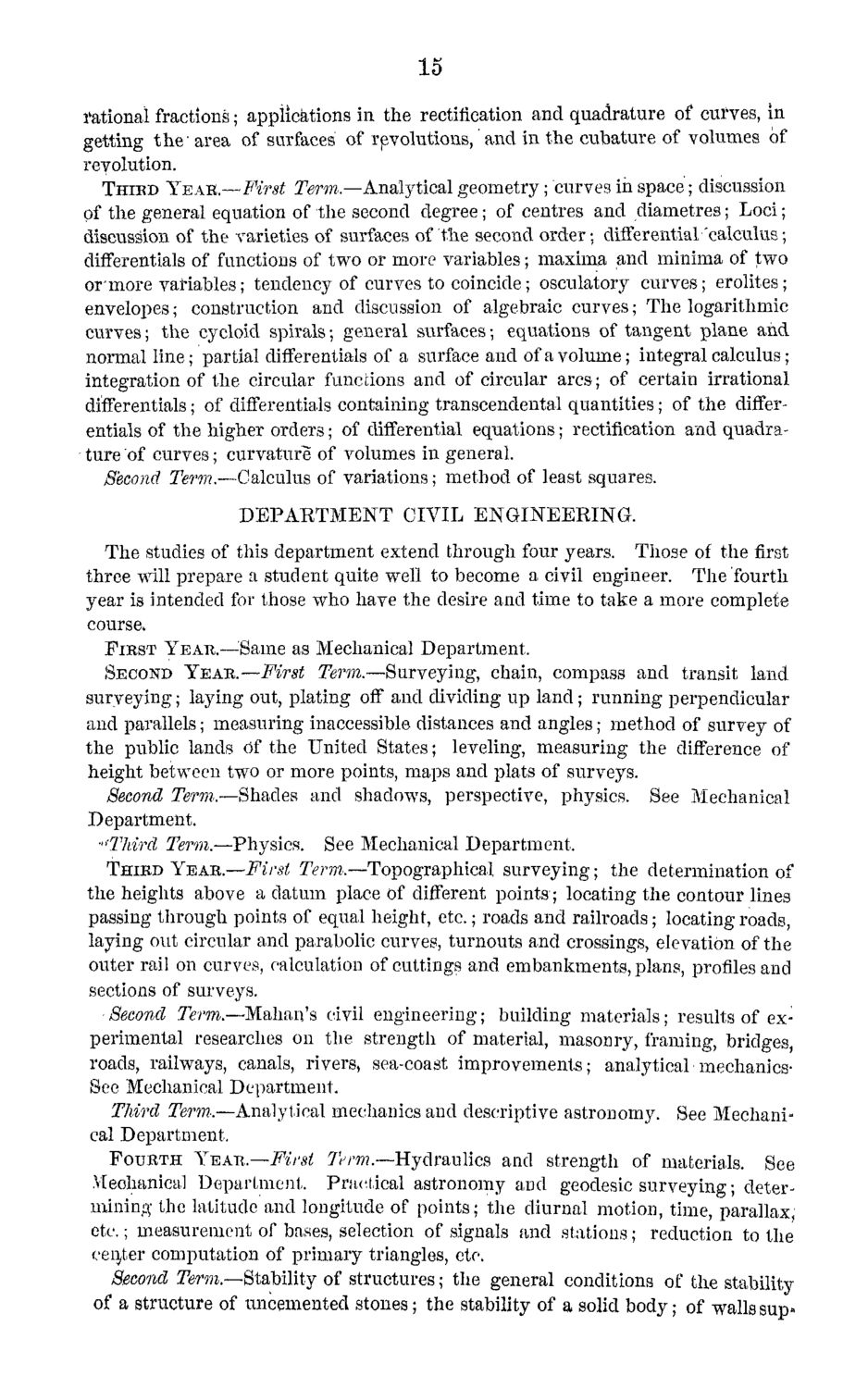| |
| |
Caption: Course Catalog - 1869-1870
This is a reduced-resolution page image for fast online browsing.

EXTRACTED TEXT FROM PAGE:
15 rational fractions; applications in the rectification and quadrature of curves, in getting the area of surfaces of revolutions, and in the cubature of volumes of revolution. THIED TEAB.—First Term.—Analytical geometry; curves in space; discussion of the general equation of the second degree; of centres and diametres; Loci; discussion of the varieties of surfaces of the second order; differential 'calculus; differentials of functions of two or more variables; maxima and minima of two or more variables; tendency of curves to coincide; oscillatory curves; erolites; envelopes; construction and discussion of algebraic curves; The logarithmic curves; the cycloid spirals; general surfaces; equations of tangent plane and normal line; partial differentials of a surface and of a volume; integral calculus; integration of the circular functions and of circular arcs; of certain irrational differentials; of differentials containing transcendental quantities; of the differentials of the higher orders; of differential equations; rectification and quadrature of curves; curvature of volumes in general. Second Term.—Calculus of variations; method of least squares. DEPARTMENT CIVIL ENGINEERING. The studies of this department extend through four years. Those of the first three will prepare a student quite well to become a civil engineer. The fourth year is intended for those who have the desire and time to take a more complete course. FIRST YEAH.—Same as Mechanical Department. SECOND YEAH.—First Term.—Surveying, chain, compass and transit land surveying; laying out, plating off and dividing up land; running perpendicular and parallels; measuring inaccessible distances and angles; method of survey of the public lands Of the United States; leveling, measuring the difference of height between two or more points, maps and plats of surveys. Second Term.—Shades and shadows, perspective, physics. See Mechanical Department. -Third Term.—Physics. See Mechanical Department. THIKD YEAH.—First Term.—Topographical surveying; the determination of the heights above a datum place of different points; locating the contour lines passing through points of equal height, etc.; roads and railroads; locating roads, laying out circular and parabolic curves, turnouts and crossings, elevation of the outer rail on curves, calculation of cuttings and embankments, plans, profiles and sections of surveys. Second Term.—Mahan's civil engineering; building materials; results of experimental researches on the strength of material, masonry, framing, bridges, roads, railways, canals, rivers, sea-coast improvements; analytical mechanicsSee Mechanical Department. Third Term.—Analytical mechanics and descriptive astronomy. See Mechanical Department. FOUBTH YEAH.—First Term.—Hydraulics and strength of materials. See Vleohanical Department. Practical astronomy and geodesic surveying; determining the latitude and longitude of points; the diurnal motion, time, parallax etc.; measurement of bases, selection of signals and stations; reduction to the center computation of primary triangles, etc. Second Term.—Stability of structures; the general conditions of the stability of a structure of uncemented stones; the stability of a solid body; of walls sup-
| |